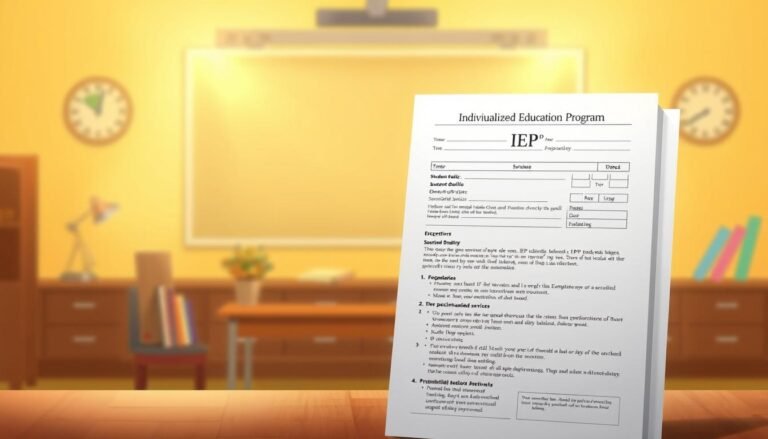
Breaking the Silence: Shedding Light on Language-Based Learning Disabilities in the Classroom
Introduction
Imagine walking into a classroom filled with eager young minds, buzzing with curiosity and anticipation for the day’s lessons. Now envision that one child sitting quietly, looking increasingly frustrated as the teacher writes complex words on the board. For countless children, this scenario represents the daily struggle associated with language-based learning disabilities (LBLDs). Breaking the Silence: Shedding Light on Language-Based Learning Disabilities in the Classroom is not merely an academic pursuit; it is a critical mission to understand and address one of the most common challenges in education today.
Language-based learning disabilities affect approximately 5–15% of the population, making it crucial for educators and parents alike to recognize these challenges early. Such awareness can transform the teaching environment, fostering inclusion and empowering all students to reach their full potential. Through this article, we will delve deep into the significance of understanding these disabilities, explore actionable strategies for intervention, and highlight compelling case studies that illustrate real success in the classroom.
Understanding Language-Based Learning Disabilities (LBLDs)
What Are Language-Based Learning Disabilities?
Language-based learning disabilities encompass a variety of difficulties related to speaking, listening, reading, writing, and sometimes social skills. They stem from a neurological condition that makes it challenging to process language, even when a child has average or above-average intelligence. Common types of language-based learning disabilities include:
- Dyslexia: Impairments in reading, decoding, and spelling words.
- Dysgraphia: Difficulty with writing, particularly in organizing thoughts on paper.
- Dyscalculia: Challenges with numbers, math concepts, and problem-solving.
These disabilities often co-occur, further complicating a child’s academic experience. Breaking the Silence: Shedding Light on Language-Based Learning Disabilities in the Classroom means equipping teachers with the tools to distinguish between these conditions and to support their students’ unique learning journeys.
Prevalence and Impact of LBLDs
Statistics reveal that a significant portion of the student population is affected by these disabilities. An estimated 1 in 5 students struggles with reading skills due to dyslexia, while many more silently cope with other LBLDs. These challenges often lead to frustration, low self-esteem, and, unfortunately, higher dropout rates among affected individuals.
Table 1: Prevalence of Language-Based Learning Disabilities
| Disability | Prevalence Rate (%) |
|---|---|
| Dyslexia | 15–20 |
| Dysgraphia | 5–10 |
| Dyscalculia | 3–5 |
Breaking the Silence: Shedding Light on Language-Based Learning Disabilities in the Classroom is essential not only for academic success but also for the emotional well-being of students.
Identifying Language-Based Learning Disabilities in the Classroom
Signs and Symptoms
Identifying LBLDs early on is crucial for implementing effective intervention strategies. Some indicators that a child may be struggling with LBLDs include:
- Difficulty following verbal instructions
- Challenges with phonemic awareness (recognizing sounds in words)
- Inconsistent spelling and handwriting
- Trouble organizing thoughts during writing tasks
Educators should adopt a keen eye for these signs and engage parents in discussions about their child’s progress. By breaking the silence, teachers can create a supportive environment where students feel safe to express their difficulties.
Case Study: Early Identification
Consider the case of a third grader named Marco, who appeared disengaged and frustrated in class. His teacher noticed he often mispronounced familiar words and struggled to follow verbal instructions. Upon discussing these concerns with Marco’s parents and conducting further assessments, it became apparent that he had dyslexia. With early identification, Marco received specialized tutoring and support from a speech-language pathologist. As a result, he began to flourish academically and socially, showcasing the impactful consequences of proactive intervention.
Teacher Training and Awareness
It is vital that educators receive proper training in recognizing the signs of language-based learning disabilities. Professional development programs focusing on LBLDs will cultivate a well-informed educator community capable of creating an inclusive learning environment.
Instructional Strategies for Supporting Students with LBLDs
Individualized Education Plans (IEPs)
Individualized Education Plans (IEPs) serve as a cornerstone of support for students with LBLDs. Collaborating with special education professionals, teachers can create tailored strategies that address specific learning goals for each child. This can range from incorporating visual aids to utilizing assistive technology.
Multisensory Learning Techniques
Breaking the Silence: Shedding Light on Language-Based Learning Disabilities in the Classroom necessitates embracing multisensory learning strategies, which provide a multi-faceted approach to instruction. These techniques engage students through visual, auditory, and kinesthetic modalities, enhancing their understanding and retention.
- Visual aids: Use charts, graphic organizers, and pictures to present concepts.
- Auditory tasks: Incorporate listening exercises, chants, and songs that reinforce vocabulary.
- Kinesthetic activities: Utilize hands-on materials and movement-based learning to promote comprehension.
Case Study: The Power of Multisensory Instruction
In a local middle school, a student named Sarah faced challenges with spelling due to dyslexia. Her teacher implemented Research-Based Instructional Strategies (RBIS) that incorporated multisensory learning. Through targeted phonics programs combined with movement, Sarah’s spelling improved significantly over just one semester. She went from struggling with basic words to writing eloquent essays for her classes.
Encouraging Open Communication
Embedding a culture of open communication can significantly alleviate the stress that students with LBLDs face. Encouraging questions and self-advocacy helps establish an accepting classroom atmosphere. Use methods such as:
- Check-Ins: Regular one-on-one discussions with students can help gauge their comfort levels and academic needs.
- Student-Led Conferences: Enabling students to express their progress and challenges during parent-teacher meetings fosters responsibility and ownership over their learning.
Using Technology to Support LBLD Students
Assistive Technology in the Classroom
Technology has the power to revolutionize the teaching experience for students with LBLDs. Tools such as text-to-speech software, speech recognition applications, and digital graphic organizers assist students in accessing necessary information and expressing their thoughts.
Chart 1: Examples of Assistive Technology Tools
| Tool | Purpose |
|---|---|
| Text-to-Speech Software | Converts written text into spoken words |
| Speech Recognition | Allows users to dictate instead of type |
| Graphic Organizers | Helps organize thoughts visually |
Promoting Digital Literacy
By integrating technology into the curriculum, educators can help students develop digital literacy skills essential for success in a technology-driven world. Simple strategies like using educational apps or online platforms can bolster student engagement in historically challenging subjects.
Case Study: A Technological Leap
In their high school English class, a teacher discovered that the traditional curriculum did not resonate with students experiencing LBLDs. By incorporating digital storytelling software, students who previously struggled with writing assignments could now create multimedia presentations. This shift not only improved their academic performance but also increased student enthusiasm and engagement.
Creating an Inclusive Classroom Environment
Fostering Peer Support
Creating a supportive classroom culture is imperative. Encourage collaboration among students through group projects and peer tutoring initiatives. This not only fosters camaraderie but allows students with LBLDs to benefit from the diverse skills of their peers.
Celebrating Diversity
Owning diversity within the classroom includes recognizing the unique contributions of each student. By celebrating different learning styles and encouraging acceptance, educators can dismantle the stigma around LBLDs, enabling all students to feel valued.
Conclusion
Breaking the Silence: Shedding Light on Language-Based Learning Disabilities in the Classroom is a clarion call for educators, parents, and society as a whole. By understanding, recognizing, and embracing the nuances of language-based learning disabilities, we can create a future where no child feels marginalized by their learning differences. Equipped with innovative strategies, open communication, and the right resources, we can transform our classrooms from spaces of struggle to arenas of success.
Let us remember that every child is a world of potential waiting to be realized. By shining a light on language-based learning disabilities, we are not just about fostering academic growth; we are about cultivating resilience, creativity, and confidence in every learner.
FAQs
1. What are the signs that a child might have a language-based learning disability?
Signs include persistent difficulties with reading, spelling, writing, and following directions, among other language processing issues.
2. How are language-based learning disabilities diagnosed?
Diagnosis typically involves assessments by educational psychologists, speech-language pathologists, or other trained professionals who utilize various tests to evaluate a child’s learning profile.
3. What interventions work best for students with LBLDs?
Multisensory instruction, individualized education plans, and assistive technology are effective approaches.
4. Can children with LBLDs succeed academically?
Absolutely! With early intervention and the right strategies in place, many children with LBLDs can excel in their academic pursuits.
5. How can parents support their children with LBLDs at home?
Encouraging open dialogue about their experiences, providing reading support, and fostering a positive, patient learning environment are key.
6. What role does technology play in supporting students with LBLDs?
Assistive technologies can help level the playing field by providing alternative methods to interact with and understand language, making learning more accessible.
In creating educational awareness and support for students with language-based learning disabilities, we set the stage for a future where every child can thrive without the shadows of misunderstanding or stigma. Let’s continue the conversation, share resources, and inspire action to ensure that no child is left behind.
















